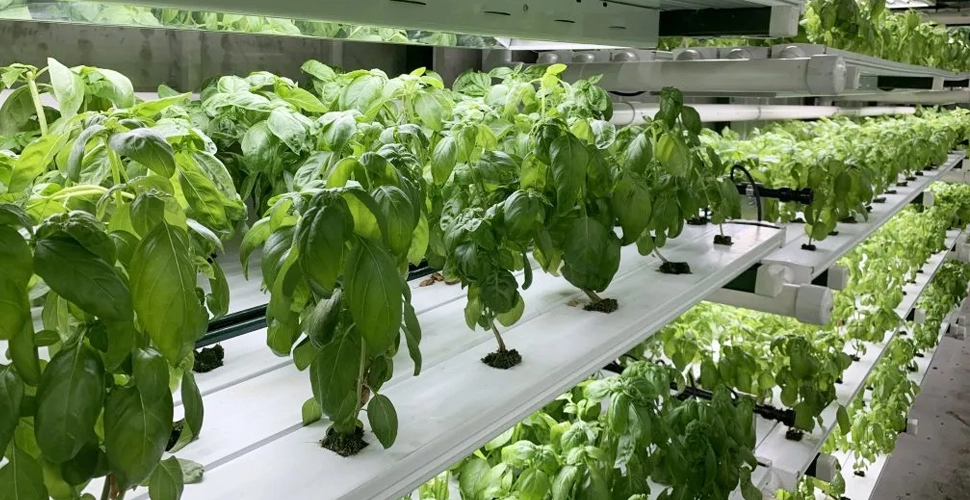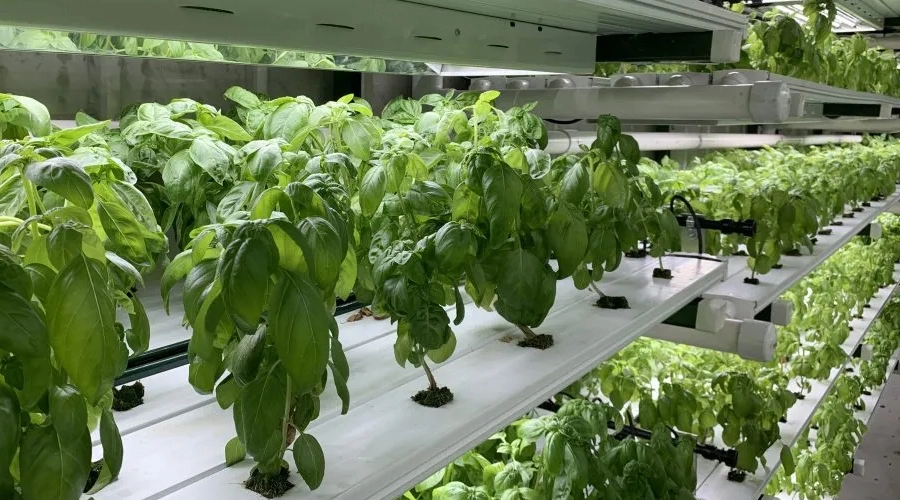Embarking on the hydroponics journey can be exciting and overwhelming, especially when faced with the myriad choices of hydroponic systems.
In this exploration of hydroponic systems, let’s unravel the mysteries of seven distinct techniques: Deep Water Culture (DWC), Nutrient Film Technique (NFT), Aeroponics, Drip System, Wick System, Vertical Hydroponics, and Ebb & Flow System.
Each method is a unique pathway to cultivating plants in a soil-less environment and understanding their intricacies can turn the perplexity of choices into a thrilling adventure.
What you choose doesn’t matter much, as long as you learn something here and enjoy the process. Come on, getting familiar with different ways to grow hydroponic farming will make navigating the hydroponic system list easier for you.
Deep Water Culture (DWC)
Lush root systems suspended in nutrient solution – that’s DWC!

Working Principle of DWC:
Submerged Roots: Plant roots are fully immersed in a nutrient-rich water solution.
Floating Platform or Net Pot: Roots are often suspended in the water using a floating platform or a net pot, allowing them to access the nutrient solution.
Continuous Oxygenation: Oxygen is provided to the roots through air stones or diffusers that create bubbles in the water.
Nutrient Absorption: Plants absorb essential nutrients directly from the water, promoting efficient nutrient uptake.
Hydroponic Environment: DWC operates as a hydroponic system, eliminating the need for soil and relying on water for nutrient delivery.
The DWC system is a simple and practical hydroponic system suitable for home, farm, and commercial cultivation.
Crops for DWC:
Vegetables: Lettuce, spinach, kale, cucumber, peppers, tomatoes,
Herbs: Basil, mint, parsley, cilantro, etc.,
Fruits: Strawberries, tomatoes,
Flowers: Marigolds, dwarf morning glories, etc.,
Cannabis (where legal).
Kostir:
- Water and nutrient-efficient, reducing water resource consumption.
- High space efficiency, suitable for large, medium, and small-scale cultivation.
- Simple setup, easy to maintain.
- High yield, fast growth.
Gallar:
- Prone to water contamination, requiring regular solution changes.
- Roots can easily rot, necessitating attention to water temperature and nutrient solution concentration.
- Poor mobility, limiting flexibility in movement or rearranging setups.
- Susceptible to system failures such as power outages or equipment malfunctions.
Nutrient Film Technique (NFT)
Plant roots grow in a thin layer of flowing nutrient solution – that’s NFT!

Working Principles of NFT:
Continuous Flow: A thin film of nutrient-rich water is continuously circulated along a sloped channel or gutter.
Root Exposure: Plant roots are suspended in the film, and exposed to a constant flow of nutrients and oxygen.
Gravity-Driven: The slope of the channel allows the nutrient solution to flow over the roots by gravity.
The NFT system is an efficient and water-saving hydroponic system suitable for home, farm, and commercial cultivation. Our vertical system, SG40, utilizes the NFT system for planting.
Crops for NFT:
Vegetables: Lettuce, spinach, arugula, small varieties of peppers;
Herbs: Herbs, basil, cilantro, mint, parsley, chives;
Other crops: Microgreens, certain cucumber varieties, certain flowering plants (for ornamental purposes);
Berries: Strawberries.
Kostir:
- Sustainable circulating nutrient solution, water, and nutrient-efficient, reducing water resource consumption.
- The system’s design is typically compact, maximizing space utilization.
- High yield, fast growth.
Gallar:
- High dependence on power, relying on a continuous power supply for the pump to maintain nutrient solution flow.
- Not suitable for large or heavy fruit-bearing plants.
- Complex system, requiring regular monitoring and maintenance.
Aeroponics
In an aeroponic system, plant roots are directly exposed to the air, and nutrient solution is sprayed in a mist onto the surface of the roots.

Working Principle of Aeroponics:
Misting Roots: Aeroponics suspends plant roots in the air and delivers nutrients through a fine mist or aerosol.
Highly Oxygenated: Roots are exposed to high levels of oxygen, promoting rapid nutrient absorption and growth.
Nutrient-Rich Mist: The nutrient solution is sprayed directly onto the roots in a mist form, maximizing nutrient uptake.
Minimal Water Usage: Efficient use of water as it is applied directly to the roots in a controlled manner.
The aeroponic system is an efficient and water-saving hydroponic system known for its high yield. Our hydroponic towers utilize the aeroponic system, highly favored by farmers for cultivating a variety of crops such as leafy vegetables, herbs, and fruits.
Crops for Aeroponics:
Leafy Greens: Lettuce, Spinach, Kale.
Herbs: Basil, Cilantro, Mint.
Strawberries: Often grown aeroponically for optimal fruit development.
Microgreens: Well-suited for aeroponic systems.
Kostir:
- High Growth Rates: Rapid plant growth due to increased oxygen and nutrient absorption.
- Water Efficiency: Minimal water usage compared to traditional soil cultivation.
- Precise Nutrient Control: Allows for precise control over nutrient concentration, optimizing plant health.
- Space Efficiency: Well-suited for vertical farming and limited space environments.
Gallar:
- System Complexity: Requires more technical knowledge for setup and maintenance.
- Risk of System Malfunction: Potential for clogging in misting nozzles or pump failures.
- Dependency on Power: Continuous power supply is crucial for maintaining misting cycles.
- Initial Cost: Higher initial setup costs compared to some other hydroponic methods.
Vertical Hydroponics
In a vertical hydroponic system, plant roots grow in vertically stacked layers.

Concept and Working Principle:
Vertical Growing Surfaces: Utilizes vertical structures to grow plants in stacked layers or towers.
Nutrient Delivery: Nutrient-rich water is circulated or dripped down the vertical surface, providing plants with essential elements.
Gravity-Assisted Flow: Water flows down from the top of the structure, utilizing gravity to reach lower levels.
Stacked Growing Beds: Plants are arranged in stacked beds or towers, optimizing space in a vertical plane.
Vertical hydroponic systems are suitable for home, farm, and commercial cultivation.
Our vertical garden system SG40 is highly acclaimed by users across various fields. It is particularly well-suited for educational research, hydroponic education, simulating plant factories, commercial displays, and home gardening.
Crops for Vertical Hydroponic:
Leafy Vegetables: Lettuce, spinach, kale, Swiss chard, arugula;
Herbs: Herbs, basil, cilantro, mint, parsley;
Tomatoes and Peppers: Certain varieties thrive in vertical growing conditions, especially those with compact growth habits;
Other Crops: Microgreens, radishes, legumes, and some flowering plants for ornamental purposes;
Kostir:
- Maximizes the use of limited space, suitable for urban or confined spaces for cultivation;
- High yield in a small area, increasing planting density and output;
- High level of automation, reducing labor costs;
- Vertical arrangement increases exposure to artificial or natural light sources;
Cons:
- Complex system requires specialized knowledge for design and maintenance;
- Initial costs during implementation may be high, especially for automation systems;
- Ensuring uniform nutrient distribution to each layer can be challenging.
Drip System
The plant roots receive nutrient solution through a drip irrigation system – that’s the Drip System!

Working Principle:
Individual Plant Drip: The nutrient solution is delivered directly to each plant through individual drip emitters.
Regular Intervals: The system operates on a timer, providing controlled and periodic drips of the nutrient solution.
Recirculation: Excess nutrient solution not absorbed by plants is collected and recirculated through the system.
Drip systems are suitable for home, farm, and commercial cultivation.
Crops for Drip System:
Vegetables: Tomatoes, peppers, cucumbers, zucchinis, lettuce, spinach, broccoli;
Fruits: Strawberries, blueberries, melons (such as watermelon and cantaloupe);
Herbs: Basil, thyme, oregano, rosemary, mint, cilantro;
Other crops: Flowers (such as roses, African daisies, dwarf morning glories), peas.
Kostir:
- Water-saving, reducing overall water consumption.
- Increased yield, allowing for the cultivation of more crops.
- High levels of automation, leading to reduced labor costs.
- Easy to expand, providing flexibility in scaling the system.
- Suitable for a variety of crops, versatile in application.
Gallar:
- Drip irrigation heads can be prone to clogging due to sediment accumulation or nutrient precipitation.
- Any power outage may lead to system interruptions.
- Setting up a drip irrigation system may require technical knowledge.
- Caution is needed to avoid overwatering, especially in situations with high flow rates or extended durations.
Wick System
The plant roots grow in water-absorbing cotton, and the nutrient solution is conveyed to the roots through the water-absorbing cotton – that’s the Wick System!

Working Principle:
Capillary Action: Relies on capillary action through wicks (usually made of felt or other absorbent materials) to deliver the nutrient solution to plant roots.
Passive Movement: Nutrient solution moves from a reservoir through wicks to the growing medium where plant roots absorb it.
Continuous Moisture: Maintains a consistent level of moisture in the growing medium.
This method doesn’t require water pumps or other equipment, making it well-suited for home gardening.
Crops for Wick System:
Herbs: Basil, mint, cilantro, parsley, chives;
Leafy Greens: Lettuce, spinach, kale, Swiss chard;
Strawberries: Suitable for smaller varieties of strawberries;
Other Crops: Small flowering plants, low-maintenance home potted plants.
Kostir:
- Easy to install and operate, ideal for hydroponic beginners.
- Requires minimal equipment, low cost, suitable for home gardening.
- No need for electricity operates passively without water pumps or electrical components.
- Compact design, ideal for small-scale or indoor gardening.
Gallar:
- Low yield, suitable for cultivating small crops, not suitable for large or heavy fruit-bearing plants.
- Slow nutrient absorption, and capillary action may lead to slower nutrient uptake.
- Uneven distribution of nutrients throughout the growing medium may occur.
- Risk of overwatering, which can impact root health in certain situations.
Ebb and Flow System
In this system, plant roots grow in a growing medium, and nutrient solution is circulated to the cultivation bed through a water pump before being drained out again.

Working Principle:
Periodic Flooding and Draining: The nutrient solution periodically floods the growing medium and then drains back into a reservoir.
Submersible Pump: A submersible pump is used to flood the growing bed, and a drain pump removes excess solution.
Timed Cycles: Operates on timed cycles, with flood and drain intervals controlled by a timer.
The ebb and flow system is suitable for home, farm, and commercial cultivation.
Crops for Ebb & Flow System:
Vegetables: Tomatoes, Peppers, Cucumbers, Lettuce, Spinach.
Herbs: Basil, Cilantro, Mint, Parsley.
Flowers: Roses, Gerbera Daisies, Petunias.
Fruits: Strawberries, Melons.
Kostir:
- Regular irrigation ensures optimal nutrient delivery and absorption by plants.
- Suitable for various types of plants, accommodating the needs of different crops.
- Flood and drain cycles, as compared to continuous flow systems, reduce the risk of overwatering.
Gallar:
- Reliance on electricity, requiring power to operate submersible and drainage pumps.
- More complex than passive systems, requiring careful installation and maintenance.
- Pump failures can disrupt flooding and drainage cycles.
- Requires a larger space, may not be as space-efficient as smaller systems in certain situations.
Jayes
Sem stafrænn markaðsstjóri hjá AUXGROW sameinar Jayes ástríðu fyrir vatnsræktunarkerfum og sérfræðiþekkingu í LED vaxtarljósum. Með praktískri reynslu og djúpum skilningi leiðir Jayes þig í gegnum heim sjálfbærrar ræktunar.






